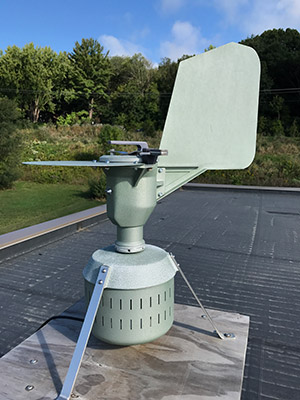What Does The Pollen Count Tell Me?

Throughout the spring, summer, and fall, your favorite weather source may share pollen counts for your area. These counts are used as a warning for those with environmental allergies – explaining what’s in the air and the level of symptoms you can expect.
Without a little research, these pollen counts can seem confusing, but it doesn’t have to be. In this blog, find the answers to the most common questions about pollen counts.
How is pollen collected?
 The pollen count from your local weather reporter isn’t just guess – it comes from actually counting individual pollen grains. While different areas may have different machines and methods of reaching their conclusion, there is most definitely a trained and certified pollen collector counting each pollen grain under a microscope.
The pollen count from your local weather reporter isn’t just guess – it comes from actually counting individual pollen grains. While different areas may have different machines and methods of reaching their conclusion, there is most definitely a trained and certified pollen collector counting each pollen grain under a microscope.
As a certified pollen counter trained by the National Allergy Bureau, Tony Kavanaugh collects and counts pollen Monday through Friday at Allergy Associates of La Crosse. The air sampler at this facility vacuums air through a 2×14 millimeter opening. Pollen sticks to a greased surface and after 24 hours of collection, Tony examines the pollen under a microscope with 400 times magnification.
He identifies and counts each pollen under the microscope to create the pollen count that is then used by local news sources when discussing the weather, and is shared with the National Allergy Bureau for nationwide reporting.
What does the number represent?
Standing alone, the pollen count number isn’t too significant, but it represents the number of pollen grains in a cubic meter of air over the previous 24 hours.
If walnut was indicated as 49, that means 49 walnut pollen grains were found on the slide from the last 24 hours.
How is the symptom index determined?

The symptom index is determined by analyzing the pollen count from that day and comparing it to recent pollen counts, historical data, and weather conditions. By looking at this data, the pollen counter can determine if the symptom index is low (minimal allergy symptoms) medium, high, or very high (severe allergy symptoms).
A few examples of how the symptom index can be adjusted day by day:
- If it’s raining, pollen may not be as bothersome (low)
- If it’s very windy, symptoms may be higher (high)
- If the number is drastically higher than it was in previous years, symptoms may be more aggressive (very high)
How is the forecast determined?
Like a regular forecast, a pollen forecast predicts what future pollen symptom indexes will be. To make this prediction, pollen counters use the same information used daily – recent counts, historical data, and weather conditions.
For example, Tony at Allergy Associates of La Crosse doesn’t count pollen on weekends. On Fridays, he’ll offer a forecast for the weekend so allergic people know what they can expect. Though these are predictions, they can be very helpful for those who are allergic to prepare and plan around high symptom days.
While paying attention to local pollen counts can help you determine what makes you feel miserable, avoiding the outdoors all season long just isn’t feasible. Consider finding a provider near you that offers disease-modifying sublingual immunotherapy to make pollen less bothersome for the years to come.
